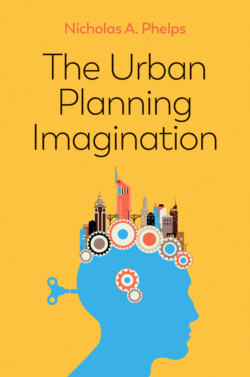Читать книгу The Urban Planning Imagination - Nicholas A. Phelps - Страница 33
Networks, flows and virtual urban planning
ОглавлениеKey tools at the urban planner’s disposal have been land-use or zoning plans and building codes. Such ‘codes’ seek to order the firmly bounded spaces or geographic scales described above. Where once land-use plans might be considered to have a beauty and seductive power of their own, they may now present a limited and increasingly unappealing visual medium, since:
planners and plans have been criticized not merely for trying to ‘order’ the dynamic and inherently disorderly development of cities and regions. The concepts that have been used … are seen to reflect a view of geography which assumes … contiguous space … that physical proximity is a primary social ordering principle and that place qualities exist objectively, to be … made by physical development and management projects. (Healey, 2004: 47)
The reliance on land-use plans to shape physical developments was a peculiarly twentieth-century phenomenon. Set within the fixed administrative boundaries of individual local governments, each plan – where it existed – was prepared over years of data collection, analysis and projection regarding demographic shifts, housing requirements, employment trends, transport use, commuting, health provision, educational attainment, retail spending, leisure patterns, tourism and the like prior to public consultation, by which time the plan was likely to be out of date.
In a world in which most development is now undertaken by citizens and clubs it may seem anachronistic that we still rely on plans produced by the state. Moreover, many of the trends affecting cities today – the ‘gig’ or digital ‘platform’ economies – have only indirect relationships to land use. Equally, some of the most influential and seductive of ‘plans’ have not been land-use or zoning plans, though they have still portrayed fixed arrangements between morphological elements. It was the spatial form of Ebenezer Howard’s Garden City idea that became the ideal, not its land-ownership and governmental formulations. What will be the fate of these sorts of plans?
In an era when data can be produced on any number of urban trends in seconds and made publicly available quickly rather than in months and years, is the traditional land-use plan now spent? The rigidity of the spatial imagination associated with such plans sits uncomfortably with urban planning being a future-oriented activity attuned to aspirations and, as such, subject to continual revision. And yet, there are paradoxes here. For plans have continued to proliferate, albeit in new and varied styles, and the appetite to be modern among many nations and peoples (Ferguson, 2006) will ensure that land-use plans endure.
While the urban planning imaginaries associated with bounded regions are well established, the planning imagination associated with the networks, flows and virtuality (or synchronicity) of contemporary life is immature by comparison. A problem for urban planning – given its dual analytical and normative aspects – is whether these new imaginaries are capable of being rendered visually and rhetorically in ways that are seductive or practical as guides for intervention. Can those planning theories that seek to mobilize the communicative, collaborative or deliberative (Forester, 1993; Healey, 1997; Innes and Booher, 2010) properties of networks, flows and virtual connections of citizen, club and state actors ever appeal or be harnessed to practices of planning actors? I discuss these properties further in chapter 5.
